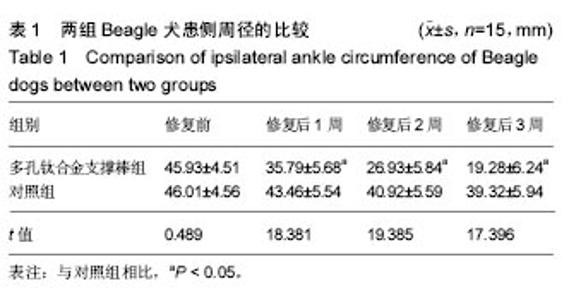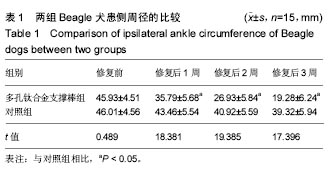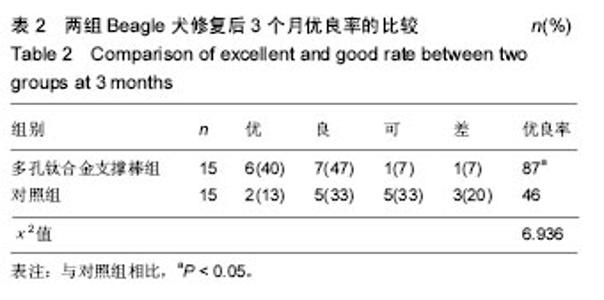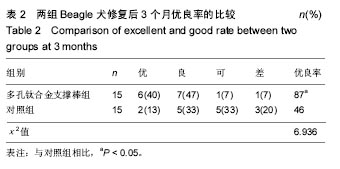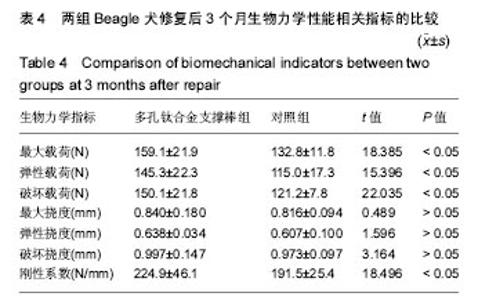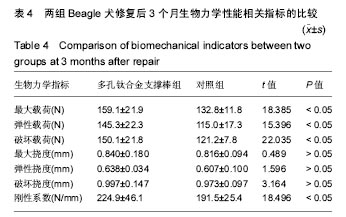| [1]郑寿鹏,勾守建,尼哈提.踝部损伤对踝关节稳定性的影响探讨[J].临床和实验医学杂志,2010,9(6):438-439.[2]Walls RJ, Ross KA, Fraser EJ, et al. Football injuries of the ankle: A review of injury mechanisms, diagnosis and management.World J Orthop. 2016;7(1): 8-19.[3]Kaminski TW, HertelJ, Amendola N, et al. Nationalathletic trainers' association position statement: conservative management and prevention of ankle sprains in athletes. J Athl Train. 2013; 48(4): 528-545.[4]徐翔燕,王冬梅,尹建文,等.个性化踝关节假体的设计及三维有限元分析[J].医用生物力学,2015,30(5):404-409.[5]Parr WCH, Chamoli U, Jones A, et al. Finite element micro-modeling of a human ankle bone reveals the importance of the trabecular network to mechanical performance: New methods for the generation and comparison of 3D models. J Biomech. 2013;46(1):200-205.[6]裴轶丰,李小康,王财儒,等.多孔钛合金表面镁涂层改性及其成骨效应的实验研究[J].中华创伤骨科杂志,2015,17(5):438-443.[7]颉芳霞,何雪明,吕彦明,等.生物医用多孔钛及钛合金激光快速成形研究进展[J].材料导报,2016,30(7):109-114.[8]于金河,李增炎,彭阿钦.桡骨远端关节内骨折对腕关节影响的生物力学研究[J].中国骨与关节损伤杂志,2005,20(4):252-254.[9]顾卫平,殷新民.颞下颌关节生物力学的理论分析方法[J].国外医学(口腔医学分册),2004,31(6):432-434.[10]董伟强,余斌,白波.不同手术方式治疗踝关节韧带复合体损伤的生物力学评价[J].中国临床解剖学杂志,2015,33(5):573-576.[11]Arom GA, Yeranosian MG, Petrigliano FA, et al. The changing demographics of knee dislocation: a retrospective database review. Clin Orthop Relat Res.2014;472(9):2609-2614.[12]Sánchez M, Yoshioka T, Ortega M, et al. Ultrasound-guided platelet-rich plasma injections for the treatment of common peroneal nerve palsy associated with multiple ligament injuries of the knee. Knee Surg Sports Traumatol Arthrosc.2014;22(5):1084-1089.[13]刘建永.慢性踝关节外侧不稳定距腓前韧带和跟腓韧带解剖重建[J].中国运动医学杂志,2016,35(2):126-131.[14]刘磊,杨宗酉,孙家元,等.2010年至2011年我国平原与高原地区成人踝关节损伤的流行病学对比研究[J].中华创伤骨科杂志, 2015, 17(12):1064-1068.[15]Vincent HK, Montero C, Conrad BP, et al. “Functional pain", functional outcomes, and quality of life after hyaluronic acid intra-articular injection for knee osteoarthritis. PM R. 2013;5(4):310-318.[16]彭润,刘依嘉,李箭,等.软骨修复技术在距骨骨软骨损伤治疗中的应用[J].中国运动医学杂志,2016;35(6):594-597.[17]Woodworth T, Inganath V, Furst D E. Rheumatoid arthritis in the elderly: recent advances in understanding the pathogenesis, risk factors, comorbidities and risk-benefit of treatments. Aging Health. 2013;9(2): 168.[18]刘国彬,张国平,任庆云,等.踝关节不同姿势下MRI检查对其周围韧带及肌腱损伤的诊断价值:单中心、诊断性试验[J].中国组织工程研究, 2017,21(4):598-602.[19]Shuler MS, Rooks MD, Roberson JR. Porous tantalum implant in early osteonecrosis of the hip: preliminary report on operative, survival, and outcomes results. J Arthroplasty. 2007; 22: 26-31.[20]Floerkemeier T, Thorey F, Daentzer D, et al. Clinical and radiological outcome of the treatment of osteonecrosis of the femoral head using the osteonecrosis intervention implant. Int Orthop. 2011; 35:489-495.[21]Yang S, Wu X, Xu W, et al. Structural augmentation with biomaterial-l oaded allograft threaded cage for the treatment of femoral head osteonecrosis. J Arthroplasty. 2010; 25(8):1223-1230.[22]Maes M, Hansen L, Cheyns P. Osteochondral mosaicplasty as a treatment method for bilateral avascular necrosis of the long finger metacarpal: case report. J Hand Surg Am. 2010; 35(8):1264-1268.[23]陈雁西,张坤,强敏菲,等.后踝骨折对关节面损伤程度影响的三维形态学评估及其临床意义[J].中华创伤杂志, 2015,31(2):111-116.[24]史尉利,郭秦炜,赵峰,等.HeppleV型距骨骨软骨损伤的影像学特点及关节镜下表现[J].中国运动医学杂志,2015,34(8):726-729.[25]Emery P, Breedveld F,van der Heijde D,et al. Two-year clinical and radiographic results with combination etanercept-methotrexate therapy versus monotherapy in early rheumatoid arthritis. Arthritis Rheum.2015;62(3):674-682.[26]Cho BK, Kim YM, Kim DS, et al. Outcomes of the modified brostrom procedure using suture anchors for chronic lateral ankle instability-a prospective, randomized comparison between single and double suture anchors. J Foot Ankle Surg. 2013;52(1):9-15.[27]Cerny M, Marlois R, Theumann N, et al. 3-T direct MR arthrography of the wrist: value of finger trap distraction to assess intrinsic ligament and triangular fibrocartilage complex tears. Eur J Radiol. 2013;82(10):e582-589.[28]Kataoka T, Moritomo H, Omokawa S, et al. Palmar reconstruction of the triangular fibrocartilage complex for instability of the distal radioulnar joint: a biomechanical study. J Hand Surg. 2013;38(5): 515-522. |
